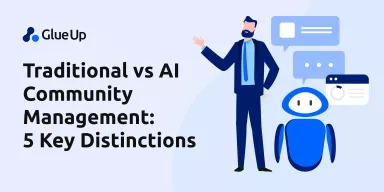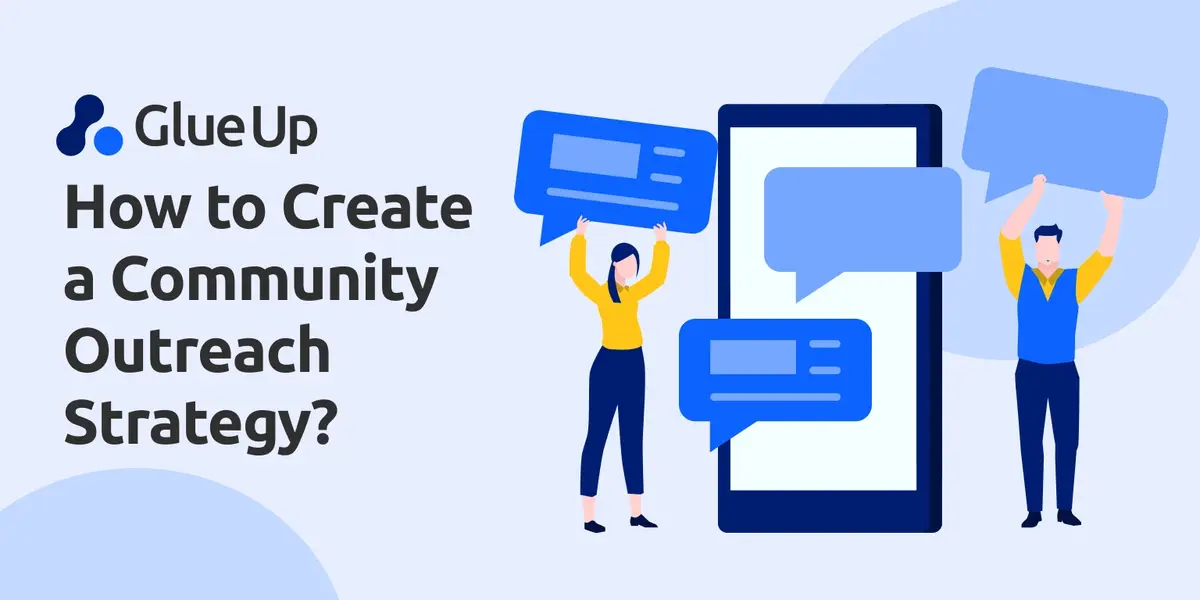
Last Updated: May 02, 2024
Your community needs to be regularly adding new members and community outreach is a powerful way to do that.
You can choose your new members, send them a personalized outreach message, and guide them through your new member onboarding process in the best way possible.
In this article, you’ll learn the benefits of using direct outreach to grow your community, look at actionable strategies you can use to attract members, and best practices you can follow in order to get the best results. Let’s get straight to it.
Key Takeaways
- A proactive community outreach strategy is essential for intentionally growing your membership numbers rather than relying on organic growth. It allows you to identify and recruit members who are a great fit and can add value to the community.
- Targeted email outreach is a highly effective channel, allowing you to personalize messages to each recipient. The keys are identifying the right people, sourcing their emails, and crafting compelling email templates highlighting the benefits of joining your community.
- LinkedIn is a powerful platform for connecting with potential members, especially for B2B communities. You can use search filters to find relevant professionals, optimize your profile to showcase your community, and use automation tools to scale your outreach.
- Participating in complementary communities and attending relevant networking events are great ways to naturally connect with potential members who already see the value in being part of a community. Focus on adding value and building real relationships.
- To maximize the effectiveness of your outreach, make the messaging recipient-focused, use the right tools to streamline your process, set clear goals, and continually measure performance. Once new members join, have a strong onboarding and engagement strategy to retain them.
What is a Community Outreach Strategy?
A community outreach strategy is the process of getting in touch with people who are a good fit for your community.
For example, if you run an online community for marketers, your outreach strategy would involve reaching out to Chief Marketing Officers and people in growth marketing roles to invite them into your group.
Community outreach can be done over email, in person, or on any other channel that your target audience is available on.
Why You Need a Community Outreach Strategy?
1. Proactive vs. Reactive Growth
You can’t leave the growth of your community up to chance.
Over time, there’s a strong chance your group numbers will grow organically, but it will take longer than it should hit your growth and revenue targets.
To hit your targets, you’ll need to be proactive. When planning your community outreach strategy, look at it like any other sales strategy you’d implement in your business. That means:
- Have a clear idea of who you’re targeting.
- Plan the channels you’ll use.
- Refine and test your messaging.
- Track your results and continually optimize your process.
Being proactive gives your community outreach strategy the best chance of success.
2. Contact Potential Members with Value-Add Potential
Every new person in your community needs to be a perfect fit. If you leave it up to your inbound process, you will get amazing new members.
But not everyone will be perfect, which will lead to churn, inactivity, and lower the quality of discussion.
Running a community outreach process gives you complete control over who you invite in.
If you identify someone on LinkedIn that gives you the impression, they’d be a good fit, you can personally reach out to them, explain the value of joining, and invite them to join.
Every new member will have a clear value-add skill or area of expertise that they can share with your existing members, and you know they’ll enjoy being there, as they fit your profile for an ideal community member.
3. Find People Who Can Run Workshops for Your Community
You can also use outreach to build a pipeline of people to run workshops and events for your community members, even if the person running them doesn’t become a full-time member.
Running events like these can be a powerful way to improve engagement in your community, so using outreach to source opportunities like these is worth your time.
The people you invite to participate in or host events in your community will get value out of it in the form of marketing, and your community will enjoy the helpful content.
To get results with this, you need to demonstrate to your recipient that you value their expertise, and highlight any potential benefits they can get from it.
Most people you reach out to for an initiative like this will be happy to participate, as long as something is in it for them.
Community Outreach Strategies to Grow Your Membership Numbers
1. Targeted Email Outreach
The first channel you can use to connect with new potential members is cold email.
Cold email is highly effective for a few reasons:
- It’s highly personal as you reach out to individuals
- You can personalize your messages to every recipient
- Cold email tools let you automatically send reminder emails
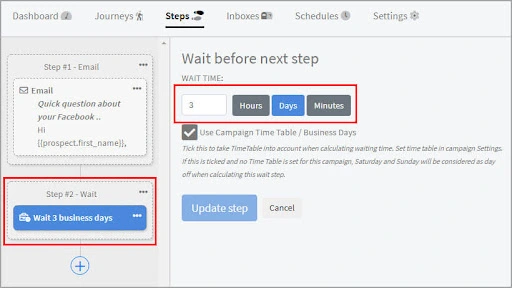
Automatically follow up with prospects in QuickMail’s cold email software.
To run a cold email outreach process, you’ll need to start by identifying the people you’re reaching out to. This is the most important step in the whole process. Once you know who will be on your list, you’ll need to source and verify their emails.
Once you have a list of people to contact, you’ll need to create your email templates. A highly effective template will include:
- Your recipient's first name and company name
- A unique opening line to show you’ve researched them. For example: “Loved your recent webinar on growth marketing, found the ideas around community growth loops relevant to my own group)”
- A short description of your group: “I run [Community Name], a marketing community made up of 843 members from high-growth companies.”
- Social proof to show you’re trustworthy. For example: “We’ve previously had people like [notable guest A] and [notable guest B] run workshops."
- A simple call-to-action that makes it easy for your recipient to reply, such as: “Is that something you’d be interested in?”
If you include these elements in your template, it’ll be instantly clear why it’s worth someone joining your community.
Once you start generating replies, you can let people know all of the key details they’re curious about and help them take the next step to join. Your cold email software will also let you track your results.
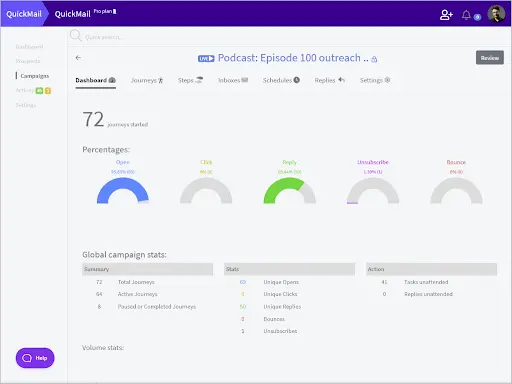
You’ll see exactly how many people are opening, replying, clicking, and unsubscribing to your campaigns to help you assess your email effectiveness.
2. LinkedIn Networking and Messaging
LinkedIn is a powerful channel for connecting with people in your target market.
You can use the search filters to identify people with the right job title and experience for your community, and then review their professional experience on their profile to confirm it.
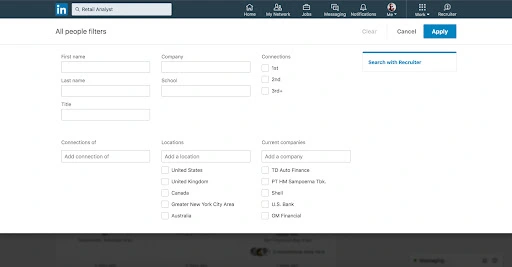
Source: Tips for Searching Like a Pro on LinkedIn
Once you have your list of potential new members ready, you can use Sales Navigator to send messages using InMail. LinkedIn works well as a channel for community outreach because:
- Almost every B2B professional uses the social network.
- You can optimize your profile to share the benefits of your community.
- You may have mutual connections with your new members.
- InMail have a high open rate.
You can automate it using LinkedIn automation tools, which offer an array of benefits, such as increased productivity, expanded network outreach, and simplified lead generation.
Set targets, such as 20 messages per day, use a tried-and-tested template, and have a clear process. Once you have a plan, you need to stay consistent with it until you start seeing results.
In time, you’ll start to see responses coming in, and you can extend an invite to your new community members.
3. Find Complementary Communities and Groups
One of the best ways to find new community members is to see who is active in similar groups and invite them to join yours.
This works well because you know these people already see the value of a good community.
But, you don’t want to be the person who goes into other communities and is only there to promote your own group. Make sure to:
- Spend time in there adding value
- Build real connections with the other community members
- Don’t regularly post links to your community
Ideally, you’ll also need to find communities that are complementary, rather than competing.
For example, if you run a community for marketing professionals, don’t join other groups focused on marketers and promote your community in there – chances are, that will be against their community rules.
Instead, look for people who match your persona, but are in different groups. For example, you might join a group focused on the tech industry, or a networking group for marketers in a specific city.
Even though there are similarities, the owners of these groups won’t see you as a direct competitor, and there may even be a way to co-promote your respective communities in the future.
4. Attend Relevant Networking Events
In-person networking events mean you can connect with people in your target market, build relationships, and invite them into your community. First, you’ll need to find relevant events.
You can use tools like MeetUp to find events, and consider looking at events that well-known companies in your industry are running too.
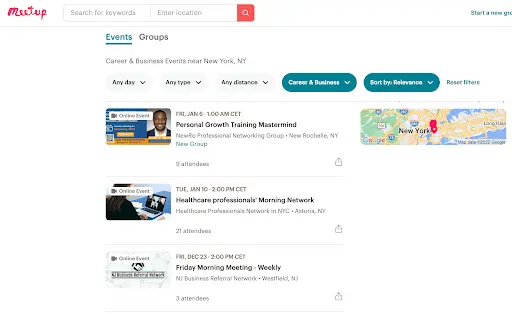
When you’re at events, focus on having natural interactions rather than simply pitching your community.
This way, you’ll build real relationships and ensure everyone you invite will be an excellent fit.
Best Practices for Community Outreach
1. Make it About the Recipient
A common mistake that people running any email marketing or outreach strategies for the first time make is using their message to share as much information as possible about their community.
This is the wrong way to approach it. In your outreach messages, you need to make it all about your recipient.
- What results will they get out of it?
- What makes it worth their time?
- Why are you specifically reaching out to them?
If you can answer questions like this in your outreach, you’ll see far higher response rates than if you made it all about your pitch.
When someone reads your message, they’ll instantly see why it’s worth joining your community and be willing to have a conversation.
2. Use the Right Community Outreach Tools
To run community outreach at scale, you’ll need the right tools. Consider using the following in your outreach stack:
- Prospecting software like UpLead or ZoomInfo to identify potential members based on their job title, seniority, company size, or location.
- Cold email software like QuickMail to send personalized outreach emails to your potential members and follow up automatically if someone doesn’t reply.
- Community management software like GlueUp to ensure every new member has an incredible onboarding experience and stays engaged in your community.
With the right tools in place, you can create a streamlined process to attract and engage your new members.
3. Set Goals and Measure Against Them
As we mentioned earlier, you need to treat your community growth plan like any other sales or marketing campaign in your business.
Set clear goals, and work backward from those to hit them. For example, the best 25% of cold email campaigns have a reply rate between 10 and 20%. Using this data, you can estimate that you’ll need to send 1,000 emails to get around 150 replies.
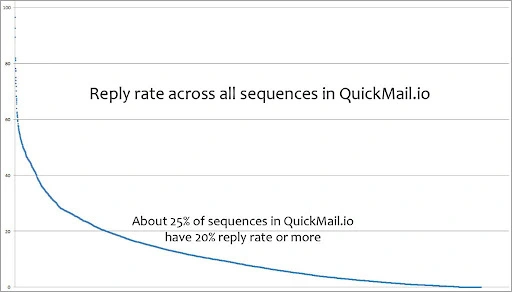
From there, you’ll use your own existing data on conversion rates to estimate how many new members you can generate. If you convert members who have entered your pipeline at a rate of 50%, you know that from your cold email campaign, you’ll get approximately 75 new members.
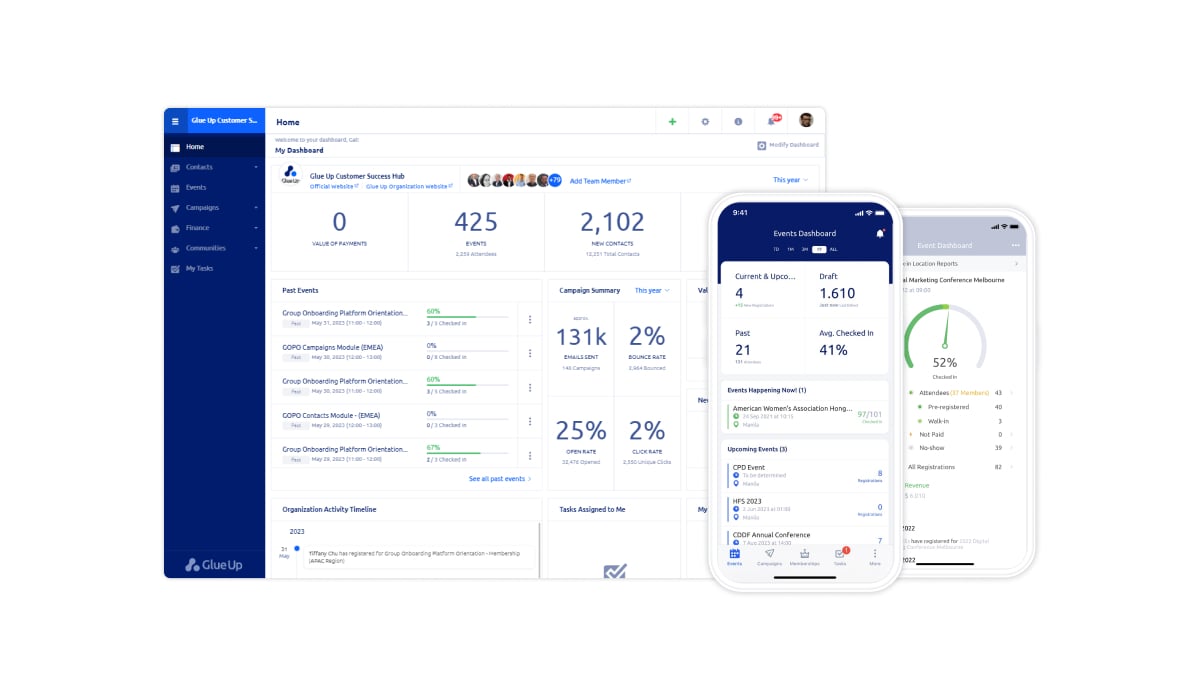
As your community outreach efforts run, you can continually track your metrics to assess performance using tools like your CRM, cold email software, and community management tools like GlueUp.
The benefits of community outreach are clear: you can use cold outreach to grow your member count and ensure that every new member you bring in is a perfect fit.
The channels we’ve looked at, such as cold email, LinkedIn outreach, and community networking, are all effective growth channels, and the best one will depend on your unique membership business.
Finally, if you follow the best practices we’ve looked at, you’ll ensure that your strategy will help your outreach stand out in your future members’ inboxes, and help you generate excellent response rates.
Once your members have joined, you can use GlueUp’s CRM and marketing platform to continually engage your members and automate your most important processes.
FAQs
1. What does an outreach strategy look like for associations?
An outreach strategy for associations typically involves a combination of tactics designed to engage current members, attract new members, and promote the association's mission and activities to a wider audience.
It also considers selecting optimal methods for reaching them and developing content or initiatives that capture their attention and engagement. Since every situation is unique, there is no universal template for creating an effective outreach plan.
The specific approach should be tailored to the particular context and goals.
2. What are examples of outreach strategies?
In essence, community outreach strategies for associations involve:
- Participating in local events, such as festivals or fairs, to raise awareness about the association and its mission;
- Collaborating with local businesses, schools, or organizations on projects or initiatives that align with the association's goals;
- Hosting community workshops, seminars, or classes to share knowledge and expertise;
- Sponsoring local sports teams, cultural events, or charity fundraisers to demonstrate community support and engagement;
- Offering volunteer opportunities for members to give back to the community and represent the association; partnering with local media outlets to share stories and news related to the association's work; and
- Creating a community advisory board or committee to gather input and feedback from local stakeholders and ensure the association's activities are responsive to community needs and interests.
3. How to design an outreach program?
To design an outreach program for associations, start by defining goals, objectives, and target audience.
Develop a strategic plan with tactics, timeline, and resources, and create compelling messaging while identifying effective outreach channels. Assign roles, establish metrics, and track success.
Once you have the process streamlined, regularly review and adjust the program based on feedback and results to ensure ongoing relevance and effectiveness.
4. How to create an outreach list?
To create an outreach list for associations, the first step is to identify your target audience based on factors such as demographics, industry, location, and interests.
Once you have a clear understanding of your target audience, start compiling data from various sources, including your existing member database, industry directories, partner organizations, and public records.
To gather additional information and insights about potential contacts, utilize marketing intelligence tools and social media platforms. Next, segment your outreach list based on relevant criteria, such as job title, company size, or engagement level, to enable targeted communication.
It's crucial to validate and update your list regularly to ensure accuracy and compliance with data privacy regulations. If needed, consider purchasing or renting vetted lists from reputable providers to expand your reach. Finally, to store, manage, and analyze your outreach list effectively, use a reliable customer relationship management (CRM) system or database.
5. What is the concept of community outreach?
Community outreach refers to the activities and initiatives undertaken by an organization to engage, educate, and support the local community in which it operates. Its ultimate goal is to build strong relationships, foster trust, and create a positive impact by addressing the needs and concerns of the community.
Overall, effective community outreach involves active listening, collaboration, and a genuine commitment to making a difference in the lives of community members.


